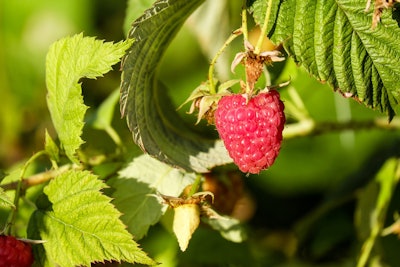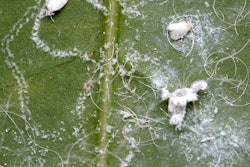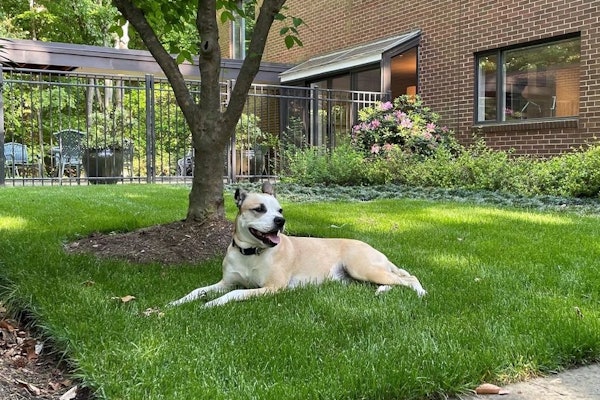 Photo: Pixabay
Photo: PixabayFor customers with brambles such as raspberry or blackberry bushes, apple or pear trees, or roses in their landscape, it’s always a good idea to keep an eye out for cane blight.
According to the Wisconsin Horticulture Division of Extension, cane blight is a fungal disease that affects the health of canes/stems of both cultivated and wild Rubus species.
This fungus can live all throughout the winter on dead canes, and spores that form on the canes can cause infection when rain, insects or wind carries them into damaged areas.
The extension notes that purple and black raspberries appear to be more susceptible to cane blight than red, but keep in mind that all commonly cultivated raspberry cultivars can get the disease.
The extension says that even though the disease typically isn’t fatal, it may cause significant fruit yield loss if not managed.
According to the extension, this disease is caused by the fungus Leptosphaeria coniothyrium.
In wet times, the extension says this fungus will produce windborne spores and will infect the canes via open wounds caused by harvest damage, pruning, insect damage, or abrasions from the canes rubbing against each other.
The extension says that as this disease develops, the fungus produces more spores that could potentially spread to other wounds by wind and splashing water, which can lead to more infections.
Know the signs
Cane blight symptoms will typically appear in early summer after blossoming and leaves begin to emerge. This disease can also appear in association with wounds caused by pruning or harvesting fruit, according to the extension.
Be on the lookout for the sudden death of side branches and the tips of canes that bear fruit, as well as cankers, purple or dark brown spots, below the dieback.
“In wet weather, cankers may produce a grey ooze,” the Wisconsin Horticulture Division of Extension says online. “In dry weather, the cankers may appear fuzzy or powdery. Dead canes may become brittle and snap off in windy conditions.”
Restoration and prevention
If your customers have already seen cane blight set in on their brambles, be sure to avoid pruning any infected canes during the growing season, as the extension says this will provide the cane blight fungus easy access to healthy tissue.
“Label symptomatic canes as you see them and prune the canes to the ground during the dormant season (mid- to late winter),” the Wisconsin Horticulture Division of Extension says online. “Also, prune any older cane stubs at this time to remove them as a source of abrasion and wounding for newer canes. Pruning when plants are dormant allows ample time for wounds to close at a time of year when spores of the cane blight fungus are not being produced.”
Be sure to only use sharp tools when pruning and to sanitize tools after each cut by dipping them in 10 percent bleach or 70 percent alcohol for about 30 seconds, according to the extension.
Once you’ve gotten rid of the infected canes, dispose of them by burning them wherever local ordinances allow, arranging to have them hauled away through municipal brush collection or by burying them deeply.
The extension says that patience is key when it comes to getting completely rid of cane blight, as it could take two or more years of pruning and thorough sanitation to reduce cane blight to insignificant levels.
To help prevent cane blight from cropping back up in the future, the extension recommends choosing a site that is well-drained and sunny when working to establish a new patch for your customer’s brambles. The extension also recommends keeping approximately 18 inches between rows, as well as closely monitoring weed control.
“Proper site selection, row spacing, and weed control will promote good airflow and drainage and will reduce excessive moisture that is favorable for spore production by the cane blight fungus,” the Wisconsin Horticulture Division of Extension says online.
Additionally, the extension says maintaining optimum soil fertility will also prove beneficial, and if plants are left unfertilized, they will ultimately produce weak canes that will be less likely to be able to fight off cane blight infections.
However, if the plants are overfertilized, particularly with nitrogen according to the extension, they will produce new growth that will be more prone to breakage and wounding by certain insects that will feast on the new growth.











